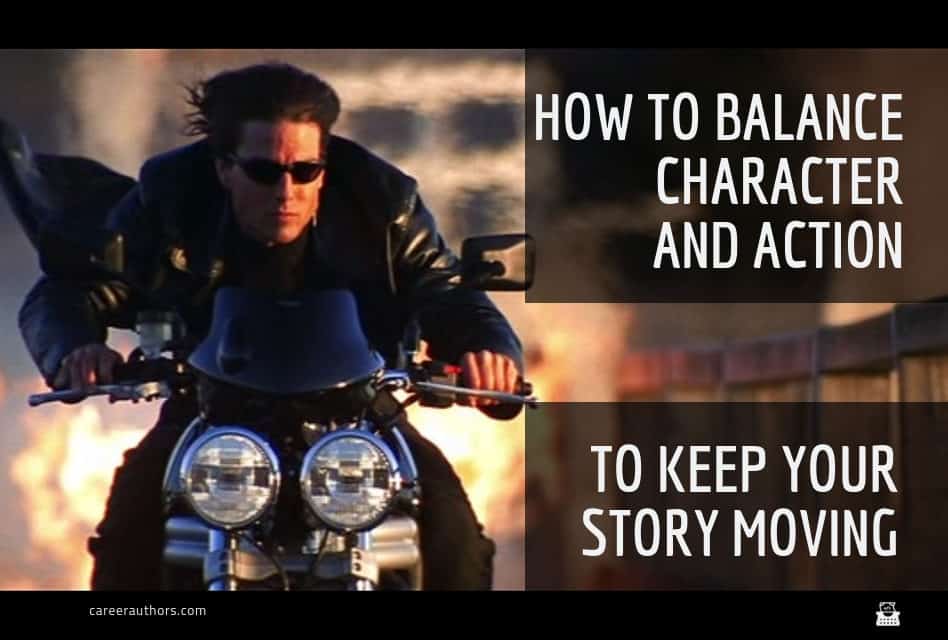by Julie Hyzy
Characters, whether sympathetic or despicable, are the fuel that keep a plot moving. I’m sure you’ve heard many writers—whether plotters or pantsers—compare writing a novel to taking a trip.
Characters are fuel
Whether they start with a detailed roadmap or simply with an idea and a general direction, writing is likened to driving from one place to another with stops at interesting sites along the way.
While that’s a fine analogy, allow me to offer an addendum: Drivers/authors aren’t going to get far without fuel. Compelling characters are what provide the power to keep a story moving. Without them, readers won’t feel an urge to join the journey. In that unfortunate case, even the most exquisitely devised route—with all its fascinating must-see attractions—may never be fully explored.
Put another way:
Until a reader is emotionally invested in a character, any actions in support of or against that character’s well-being fall flat.
A guy and a truck
Allow me to offer a very basic example: In an opening scene a guy gets run over by a truck.
Let’s say the author manages to incorporate a measure of suspense into the story. Our unlucky guy—staring at his cell phone—steps onto the street as a truck barrels around the corner.
A talented author may do a phenomenal job of drawing out the seconds before impact with descriptions of the man, the truck, weather conditions, and time of day. This same author, knowing that details are key to believability, may work hard to depict an accurate accident scene, using, say, three pages of exposition to illustrate the horrific destruction.
After the collision occurs and the guy has been smashed to bits, readers may keep turning pages if they wonder why this guy’s death was important or why the truck didn’t stop. But unless this story comes from a trusted author, readers will only keep turning pages if they care.
In the example above: Do you feel any sadness at the street-crosser’s demise? Do you feel anything at all?
Probably not. It’s hard to truly care about the dead pedestrian yet because we readers know nothing about him yet.
But what if there’s more?
Let’s back up a little.
What if, moments before the poor fellow steps onto the street, he’s on the phone with his pregnant wife who called to tell him she’s gone into labor, that there’s blood everywhere, that she’s called an ambulance? Worried for her and their child, he steps up his pace and swears he’ll meet her at the hospital soon. His car is on the next block. He looks up from his phone to face the oncoming truck.
Now, how do we feel about this character?
While the example above is no one’s idea of a brilliant opener, I’d suggest that the second approach—the one where we learn a little about our soon-to-be-deceased’s family life—provides enough characterization, both for him and for her, to provoke an emotional reaction from the reader. And it does so without slowing the action. I’d argue the characterization adds to it.
In this imaginary tale, if the next scene shifts to the wife at the hospital, we’re immediately invested in her welfare and that of the baby. She’s unaware of her husband’s death but we readers know that the news will be hitting her soon.
That kind of tension—knowing that at any moment her world will come crashing down—is what keeps us turning pages.
Along the way, while the wife shifts from angry to worried, we also learn more about her character. And again, the action hasn’t slowed down one bit.
Conversely, if this same story started with the guy waking up in the morning, taking a shower, going to work, thinking about the baby and having that trigger a memory of his own childhood and playing on the swings and running with his dog, and, and, and… (see also: no action), only the most determined of readers will make it past chapter one.
How can writers effectively balance characterization and action, then, in a way that captivates readers and keeps them engrossed into the wee hours of the night?
Action is the accelerator, but characters provide the power
According to the title of Christopher Booker’s oft-quoted tome, there exist only seven basic plots. Even if Booker’s estimate is off by several dozen, that still leaves millions of books per storyline line out there. Whether the story is tragic, comic, follows a protagonist on a quest, or one of the other plots Booker describes, what sets a tale apart is its cast of characters.
Because I believe this so firmly, I subscribe to this notion:
While action moves a story forward, it’s the characters that truly drive the plot.
Action is key, and not only in crime fiction. To extend our take-a-trip analogy, action as the accelerator—we step on the gas if we want to get anywhere. When we exert pressure on the gas, our speed increases, just as action pumps a reader’s adrenaline to get those pages turning even faster. As our speed increases, however, we use more fuel. And that’s when we must rely on character power.
While it may seem counterintuitive, taking time for character internalization during an exciting action scene can serve to intensify your reader’s experience. I’m not talking about slowing the action with a detailed flashback. Slowing the action is not our goal. But taking the time to include a sentence or two—perhaps a mere phrase—not only keeps your reader grounded, it has the potential to deliver buckets of delight.
In a key scene near the end of my new book, Virtual Sabotage, protagonist Kenna Ward doesn’t know if certain individuals in a virtual reality scenario are real or simulations. As she fights for her life, she takes precious seconds to evaluate and then re-evaluate whether to fight for their lives as well. These quick moments bringing the scene’s characters into sharper focus also serve to intensify the action.
Soul-searching
Another concern when balancing characterization and action is keeping your character’s soul in mind. Would he or she take the steps you need them to? Would he or she react the way the plot requires them to? If not, the story won’t work. Characters must follow the rules of their own souls. Plots can change on a whim.
Remember that your characters are always right—about themselves, that is. Try to figure out why they refuse to behave the way you need them to. Is it because you haven’t laid the proper groundwork for this behavior? You haven’t explored a dimension of their personality that a certain action depends on? Maybe that means rewriting a prior scene.
While there are few absolutes in writing, I will defend this as one of them:
Do not ever force your characters to do something against their will.
To clarify: I’m not suggesting that characters can never be encouraged to act against their wills. Putting a gun to your protagonist’s head often serves as ample encouragement.
What I’m advocating against is forcing behaviors that don’t make sense and that your characters balk at performing. When an author forces such action from his or her characters, it shows. That author loses credibility. And readers.
Action vs. activity
Don’t confuse action with activity. Action propels the story forward. Activity describes what’s going on. And while well-placed activity can set the groundwork for action (think of the phobias and OCD tendencies of detective Adrian Monk, brought to life by the actor Tony Shalhoub on the TV series, Monk), activity for activity’s sake (filler) risks putting your reader to sleep.
Some of the best examples I’ve found that balance characterization and action come from the late, great Sue Grafton. In her excellent alphabet series, scenes are presented to the reader through Kinsey Millhone’s personal filter. Every one of Kinsey’s wry observations not only delivers sharp detail, it allows us to peer into her soul as well. Pick up a Grafton book to see what I’m talking about. The stories move at such a quick clip you almost don’t realize how well you’ve gotten to know Kinsey along the way.
There are so many complexities about balancing character and action that I’d love to have an afternoon of conversation to dig even deeper into what works, what doesn’t, and why. Next conference, let’s chat! Or let’s talk now on the Career Authors Facebook Page!

 Julie Hyzy is the New York Times bestselling and Anthony Award-winning author of the standalone thriller, VIRTUAL SABOTAGE (October 23, 2018, Calexia Press), the White House Chef mystery series, the Manor of Murder mystery series and the Alex St. James mystery series.
Julie Hyzy is the New York Times bestselling and Anthony Award-winning author of the standalone thriller, VIRTUAL SABOTAGE (October 23, 2018, Calexia Press), the White House Chef mystery series, the Manor of Murder mystery series and the Alex St. James mystery series.





